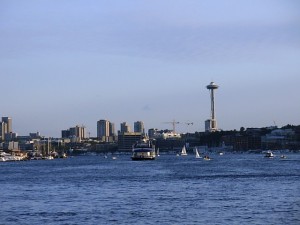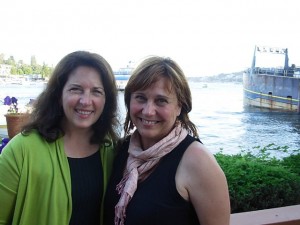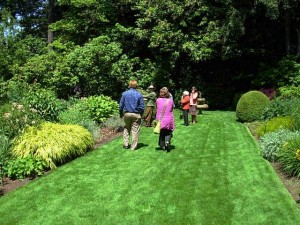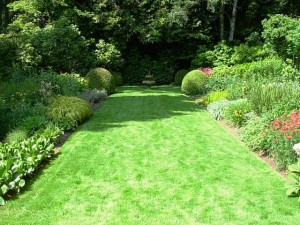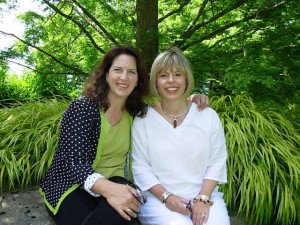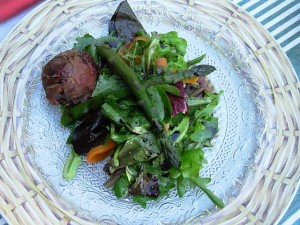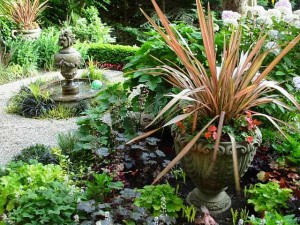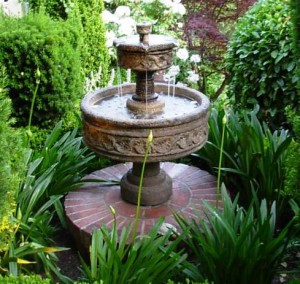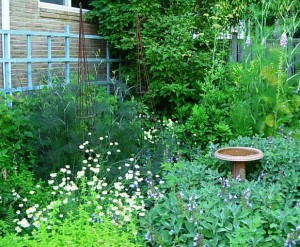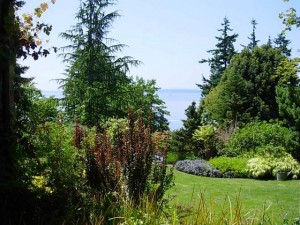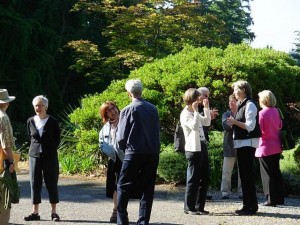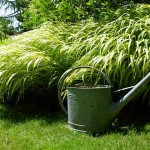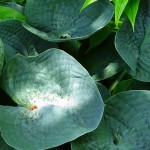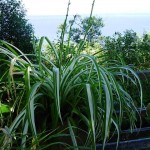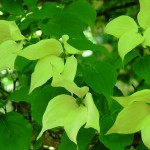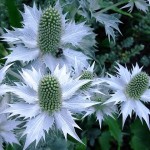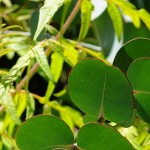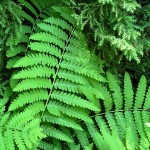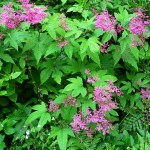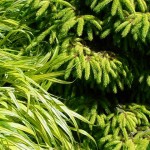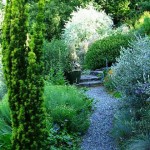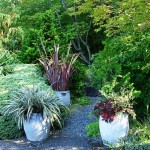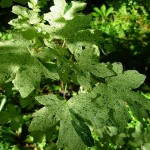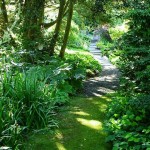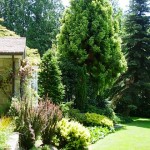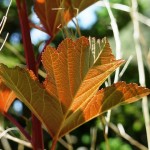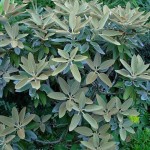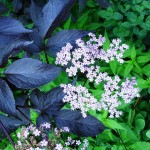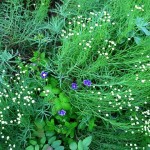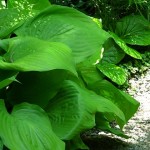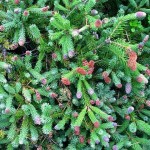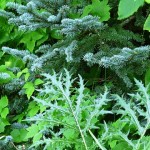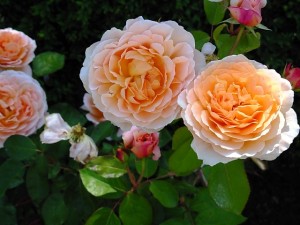
A glorious English rose, photographed in Skagit Valley on a summer day
Flowers lovers understand me when I talk about the disconnect that’s going on between the demand for organically-grown food and the miniscule desire for organically-grown flowers. I guess the argument goes: As long as I’m not EATING those flowers, why should I be bothered that a few chemicals were used on them in the field or after they were harvested?
Gardeners and flower fanatics alike have Amy Stewart and Flower Confidential to thank for heightening our awareness of this contradiction. The idea that we can enjoy the beauty of a bouquet’s stems and blooms while knowing that the growing process may have harmed the earth and those who grew the flowers is crazy! How can we honestly enjoy flowers in our homes or as symbols of our most sentimental occasions when they were drenched in chemicals or shipped thousands of miles on a jet flying across the ocean?
Thankfully, there is a burgeoning “slow flower” movement afoot, and I urge you to join me as we use our pocketbooks and consumer influence to encourage reversal of flower-growing practices that use herbicides, pesticides and non-organic fertilizers. I hope the momentum continues and becomes an ever-present conversation between flower purveyors and flower consumers. I can’t tell you how many times I witness friends ask a waiter if the fish on the menu was “wild catch” or “farm raised.” Similarly, when I buy flowers, I want to know: Were they were grown organically?
”]![erinbenzakein001 From our piece in Sunset: Erin with her son Jasper [David Perry photograph]](https://www.slowflowerspodcast.com/wp-content/uploads/2009/03/erinbenzakein001-237x300.jpg) In addition to the essays in Flower Confidential, I have Erin Benzakein to thank for my education about seasonal, sustainable and local flower-growing. Erin owns floret flowers, a Mount Vernon, Wash.-based micro-farm where she uses organic practices to raise beautiful, unusual blooms for bouquets, floral designers and wedding clients. Erin is featured in a recent issue of Sunset magazine, along with my short Q-and-A and a gorgeous photograph by David Perry.
In addition to the essays in Flower Confidential, I have Erin Benzakein to thank for my education about seasonal, sustainable and local flower-growing. Erin owns floret flowers, a Mount Vernon, Wash.-based micro-farm where she uses organic practices to raise beautiful, unusual blooms for bouquets, floral designers and wedding clients. Erin is featured in a recent issue of Sunset magazine, along with my short Q-and-A and a gorgeous photograph by David Perry.
For David and me, the desire to meet, interview, photograph and document organic flower growers has been under our skin for a few years now. Other creative projects, family demands, and sheer marketplace apathy have slowed us slightly. But we both keep returning to the subject of organic flowers. I can’t let go of the notion that this is an important topic – one that needs to be shared in order to educate, inform, inspire and – change – the relationship people have with the flowers.
While in the Northwest two weeks ago, I had a wonderful chance to visit yet another organic flower farm: Jello Mold Farm. The project of Diane Szukovathy and Dennis Westphall is an example of priorities put into practice for a commercial venture. As they write on their beautiful web site (you’ll see many of David’s photographs there), “Our flowers are safe to sniff.”
My cohort, David, an amazing photographer with whom I’ve been on this occasional journey, drove me north to Skagit Valley. We had a few stops along the way, including a sandwich at a cool roadside deli and a quick visit to Christianson’s Nursery to feast our eyes upon the cottage borders (Christianson’s is one of my favorite charming places – where plants happily coexist with weathered farm buildings).
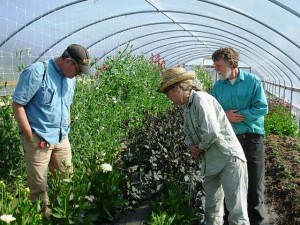
David Perry, Diane Szukovathy and Dennis Westphall at Jello Mold Farm
We arrived at Diane and Dennis’s place as they came home from a day of making deliveries to customers in the Seattle area. They deliver a heady array of fresh, field-cut flowers every Monday and Thursday to Seattle area designers, event planners and retail florists.
Time to sit down for a cold one and a good gab around the kitchen table, as we all got to know one another and talk about the flower biz.
Here are some snippets from our four-way conversation. It will give you a flavor for the longer feature story we want to publish about them:
+First things first. The name Jello Mold Farm is a curious one that always invokes a question. It is an offshoot of Diane and Dennis’s gardening business, Jello Mold Landscape, which got its name from a crazy building in Seattle’s Belltown neighborhood that Diane once covered with 400 copper-hued jello molds of all shapes and patterns. Read that history here.
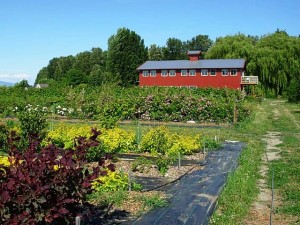
Jello Mold Farm, fields, and barn
+Diane and Dennis have converted an 8-acre farm and its former horse pastures into a bountiful flower farm. They grow 150 varieties of blooms . . . with many, many more on the way.
+After years of estate gardening, Diane yearned to put her energy into a venture that combined her obsession for plants and her values. “I needed to do something else with my energy for my living. (Estate gardening) doesn’t fully feed my soul.”
+They started selling flowers last year and 2009 is their first season to have scheduled deliveries to wholesale customers. Diane emails an “availability list” to a growing group of flower buyers twice a week.
+In Seattle, you can find their flowers at Best Buds (Madison Park), Ballard Market, and several floral studios, including Terra Bella, an organic florist in the Greenwood District.
+They like to use the term “sustainably grown,” rather than organic. “Quality is our best calling card,” Diane says. “Fresh and local sells.”
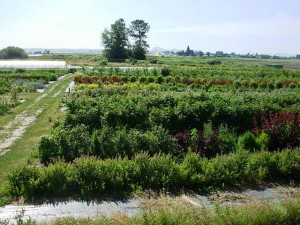
Rows upon rows of flowers ready to cut
+This is hard work, requiring 14 to 16 hour days. “There’s a whole romantic idea that we are so lucky to work on a flower farm,” Dennis admits. “People have no idea how hard we work.” Yet the couple believes they can make a decent living growing flowers rather than food, a lesson they learned after volunteering with a local CSA farmer. “There’s no way we could make a mortgage growing food,” Dennis points out.
+Making bouquets is extremely time-consuming, so Jello Mold often sells straight bunches of a single type of flower, such as dahlias. But when they do make bouquets, “I always try and put in something unique, to create a following,” Diane says. As an example, she showed me a simple bouquet with five dark pink peonies gathered within a pillow of lime-colored Alchemilla mollis (Lady’s-Mantle). They also use a lot of food in their bouquets, like berries, vines and fruiting branches.
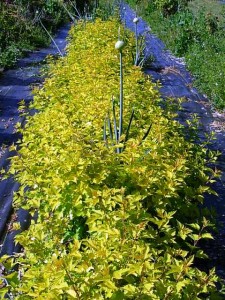
A stray allium puts a smile on my face
+Organic growers are not able to command a higher price for their cut flowers. They have to meet the same market prices charged by growers using standard, non-sustainable practices.
+Slowly, over time, this may change. But only when consumers value the health benefits (to themselves and to the planet) of bringing home an organic, sustainably-grown bouquet. “It’s in the food movement already,” Diane says. It’s only a matter of time for the floral trade (and their customers) to catch up.
+This is an emotion-based business. One of passion and conviction. Diane and Dennis take delight in seeing people make an emotional connection to their flowers. They want to take care to grow sustainably in a world where such practices don’t make financial sense to larger growers. “Ours is a better way to grow a business,” Diane says.
It was so hard to leave with our conversation just getting started. But I’m inspired and encouraged to know these new friends. And to know they are living their passion and convictions every day.
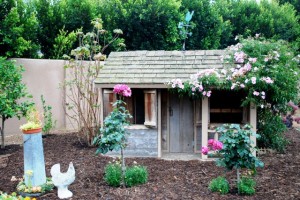
![20060717_shd_fries_032 Kathy, Jasper (left) and Xander feeding their chickens [William Wright photo]](https://www.slowflowerspodcast.com/wp-content/uploads/2009/08/20060717_shd_fries_032.jpg) Kathy’s chicken edifice is called the Palais de Poulet. She worked with Seattle artist-builder John Akers to create the magnificent chicken abode, complete with a jaunty turret and a brick entry path lined with boxwood clipped into a fleur de lis pattern.
Kathy’s chicken edifice is called the Palais de Poulet. She worked with Seattle artist-builder John Akers to create the magnificent chicken abode, complete with a jaunty turret and a brick entry path lined with boxwood clipped into a fleur de lis pattern. 








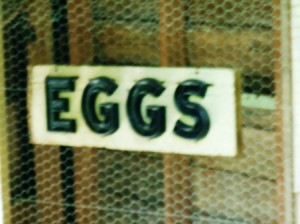
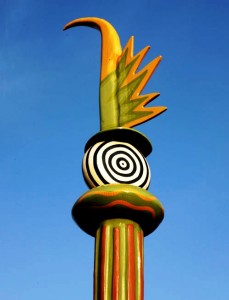
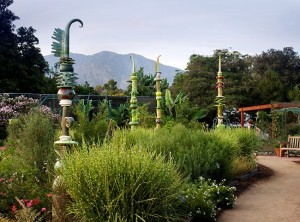

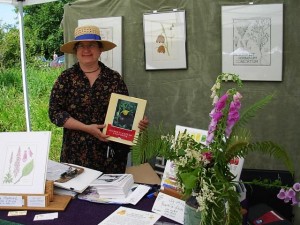
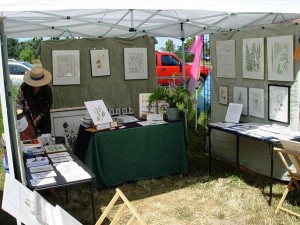
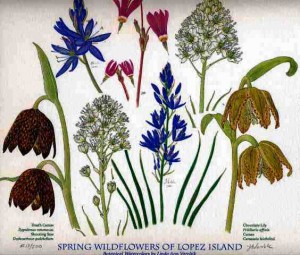
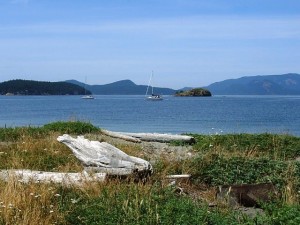
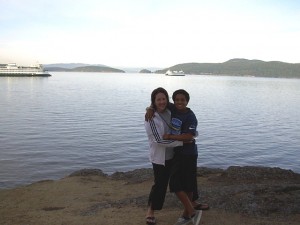
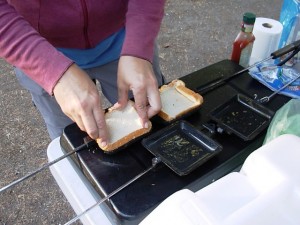

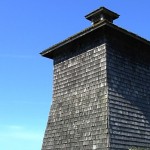
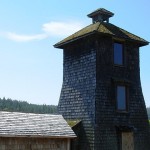
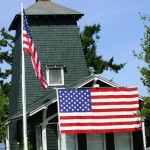
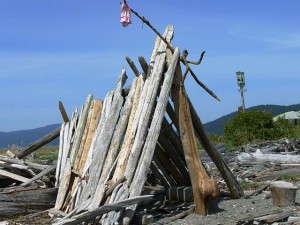
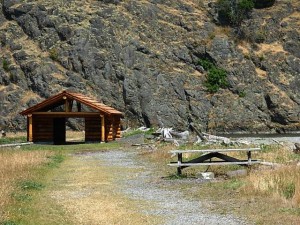
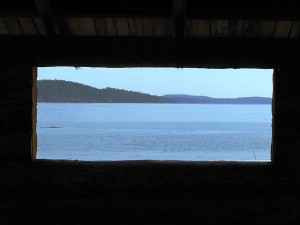

![erinbenzakein001 From our piece in Sunset: Erin with her son Jasper [David Perry photograph]](https://www.slowflowerspodcast.com/wp-content/uploads/2009/03/erinbenzakein001-237x300.jpg) In addition to the essays in Flower Confidential, I have Erin Benzakein to thank for my education about seasonal, sustainable and local flower-growing. Erin owns
In addition to the essays in Flower Confidential, I have Erin Benzakein to thank for my education about seasonal, sustainable and local flower-growing. Erin owns 



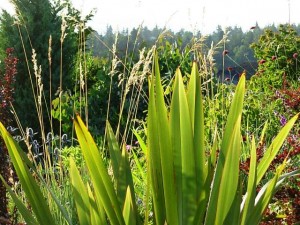
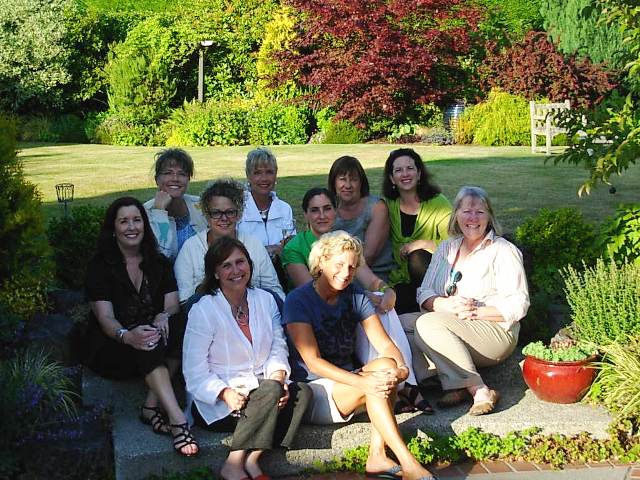
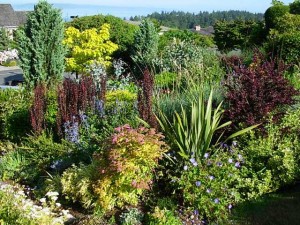
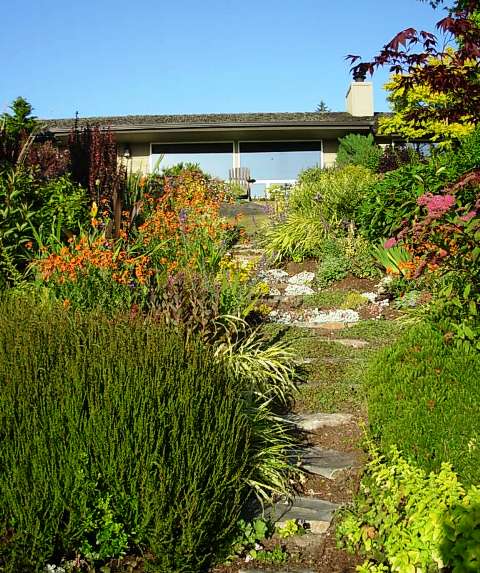
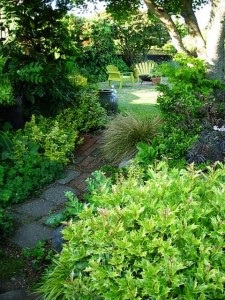
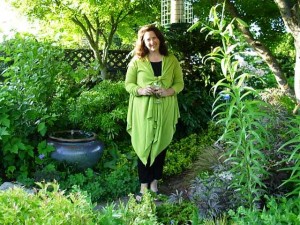
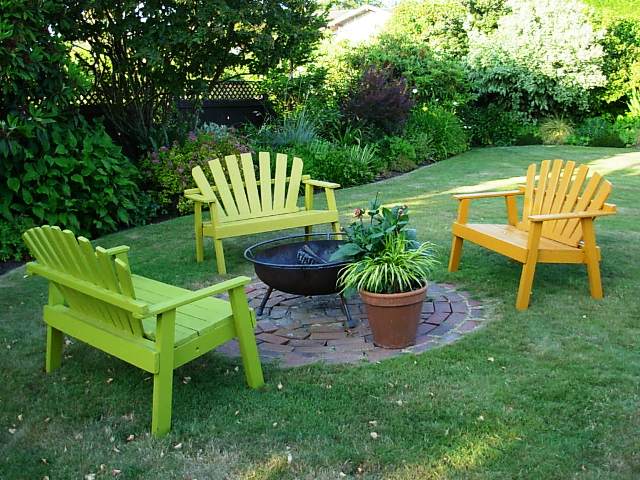
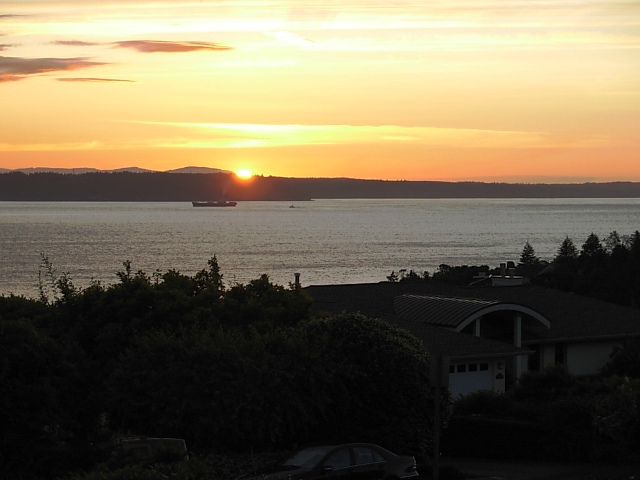
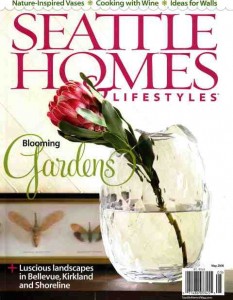 Water-Wise & Wonderful: Lessons from a lush, low-water landscape
Water-Wise & Wonderful: Lessons from a lush, low-water landscape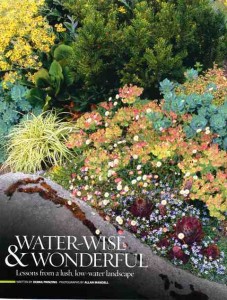 That it’s also gorgeous offers an inspiring lesson to countless young designers and students who have taken Stacie’s classes through the Saving Water Partnership, a consortium of local water districts.
That it’s also gorgeous offers an inspiring lesson to countless young designers and students who have taken Stacie’s classes through the Saving Water Partnership, a consortium of local water districts.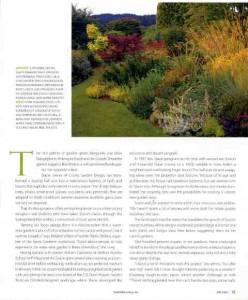 Stacie and Jon wanted to work within their resources and abilities. “We haven’t spent a lot of money and we’ve built the whole garden ourselves,” she says.
Stacie and Jon wanted to work within their resources and abilities. “We haven’t spent a lot of money and we’ve built the whole garden ourselves,” she says.
